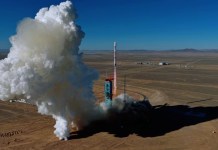China’s transport planes will augment their capacity by 20 percent soon with the indigenously-developed WS-20 engine. Military sources have told South China Morning Post that China is testing “domestically designed engines for its military transport planes”.
TANK FOR SALE: A Grizzly Variant of Sherman Tank Goes Under The Hammer, Fetching Up To $500,000
The WS-20 engine will replace the Russian Soloviev D-30 engines, which currently power the Y-20 planes built by the Xian Aircraft Industry Corporation. The source told SCMP that the WS-20 engine is designed to give the planes a bigger lift and longer range, and has been installed on one Y-20 for testing.
The biggest warplane in the PLA Air Force’s fleet has a range of 7,500km (4,660 miles) and a cargo capacity of 55 tons, but the manufacturers of the new engine have claimed that it would provide a capacity of 66 tonnes.
The increased capacity would enable the Chinese aircraft to transport their most advanced tank, the 58-tonne 99A. Previously tanks had to be dismantled for transport and reassembled on arrival, said military analyst Song Zhongping.
So far, the Chinese military has been relying on Russian engines to power its jets as it struggled to produce high-quality engines for its warplanes.
Earlier this month, the much-awaited, domestically developed engines made their first public appearance when the Xi’an Aircraft Industry (Group) Company Ltd released a photo showing a turbofan engine with a high bypass ratio.
Earliest Y-20 wind tunnel model with WS-20 engine on Sep. 21, 2010.
(Image via weibo@JETJETJETJETJET) pic.twitter.com/rTMvMrmMR6— Hao Gao ?? ?? ?? (@HaoGao12) November 24, 2020
? #China has flown its Y-20 military transport aircraft with an indigenously made WS-20 engine replacing a #Russian origin D-30 powerplant.??
The development has not been confirmed by the authorities. A photo circulating on #Chinese and foreign social media.#RAWFailed #ISI pic.twitter.com/Y5nqcmx8Ef
— Pakistan Zindabad (@GHaZ_NAwE77) November 23, 2020
According to Chinese military experts, “Compared with the D-30, the Russian engine currently being used on the Y-20, the Chinese engine is much larger in diameter, and can provide more powerful thrust, uses less fuel, and enables the Y-20 to take off and land at airfields with shorter runways.”
“It will probably take three or more years to install such engines on other transport aircraft,” the sources said. Military experts are concerned if the Chinese defense industry would be able to ensure the quality and reliability of these engines.
The Shenyang WS-20 engine is an adaptation of the WS-10A turbofan, which powers some of the PLA’s Chinese-made fighter jets, including the J-10 and J-16.
This year, an aerial tanker variant of the Y-20 was also spotted “in an apparent aerial refueling maneuver for a J-20 stealth fighter jet”, Global Times reported. The Chinese analysts have said in a report, “Combinations of the Y-20 aerial tanker with the likes of the J-20 fighter jet and H-6N strategic bomber can significantly expand the operational range of the Chinese People’s Liberation Army (PLA) Air Force”.
Chinese Y-20 tanker variant apparently conducts aerial refueling for J-20 fighter jethttps://t.co/i4SbR2J0Hw pic.twitter.com/ZMtuuxOwJR
— Fly High Aeromedia (@FHAeromedia) November 17, 2020
Y-20 pilots had told CCTV that the Y-20 will have variants like the Y-20 aerial tanker and Y-20 aerial early warning aircraft. Speculations are that a new engine could also be used on these Y-20 variants.
In September while participating in Kavkaz-2020 strategic military drills, China had deployed Y-20 large cargo aircraft for transporting heavy equipment, including infantry fighting vehicles and self-propelled howitzers to Russia for the first time.




